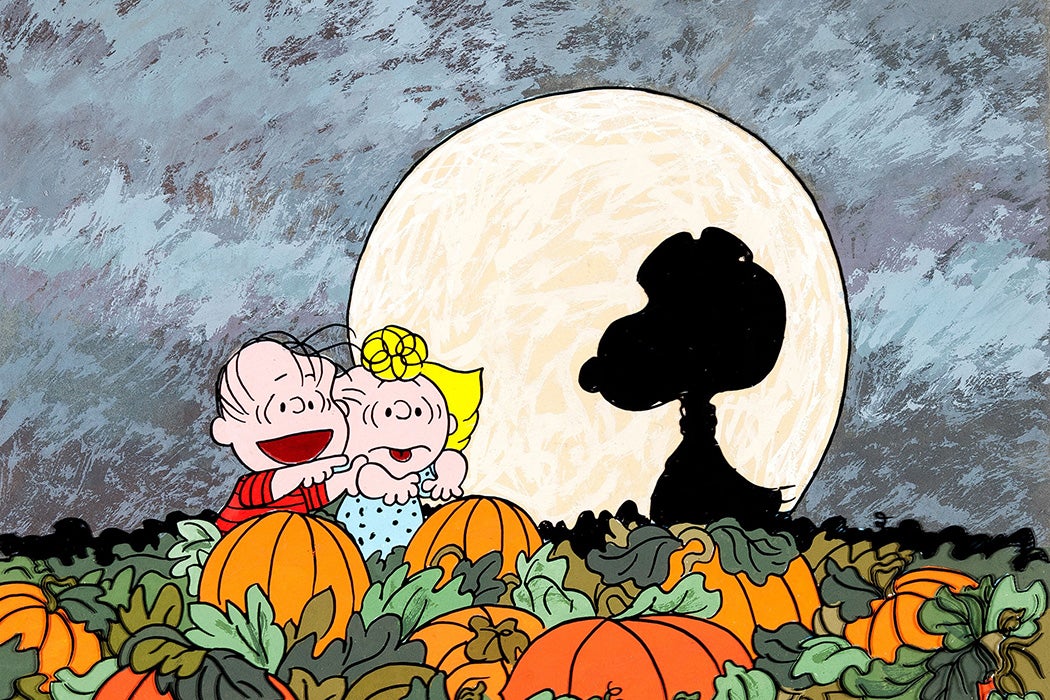In the 1966 Halloween television special “It’s a Great Pumpkin, Charlie Brown,” we find Linus waiting patiently for the Great Pumpkin to appear on Halloween night. As he tells the Peanuts gang, every year on October 31, the benevolent pagan deity “rises out of the pumpkin patch and flies through the air and brings toys to all the children in the world.”
Why, out of all the harvest iconography to choose from, is it the giant pumpkin that’s lifted to levels of mythical importance? According to the historian Cindy Ott, the selection is a natural one. Americans, she writes in “Object Analysis of the Giant Pumpkin,” have long looked to “nature and rustic rural life as a refuge and a source for powerful stories to explain who they are.” The supersized orange field pumpkin—which can’t help but evoke “people’s concepts of wild nature”—was, in other words, poised to catch the country’s imagination when it began to be regularly recorded in seed catalogs, in the early nineteenth century.
“Farm journals’ and seed catalogs’ endless reports about the enormous weight and size of mammoths caught the attention of merchants around the country,” Ott explains. “They took notice of the spectacle the giant pumpkin engendered and displayed them in their shops.”
But the symbolic properties around the giant pumpkin hadn’t yet ripened. Perhaps that’s because at the time the regular orange field pumpkin, which is native to North America, was still looked down on by Americans for its bland taste and soupy flesh. It was only later, as the country continued its transition from a rural to industrial nation, that the mythology around the orange field pumpkin began to grow. Once it became associated with an “old-fashioned subsistence farm economy,” the orange field pumpkin, especially the giant version, became wrapped up in the American agrarian myth, “the idea that farming inculcates good values of hard work and self-sufficiency and therefore promotes good citizenship.”
Weekly Newsletter
From there, it’s not a far jump for Linus’s character to declare his faith in the Great Pumpkin, a being who, as he tells Sally, is so good that he only “rises out of the pumpkin patch that he thinks is the most sincere.”







